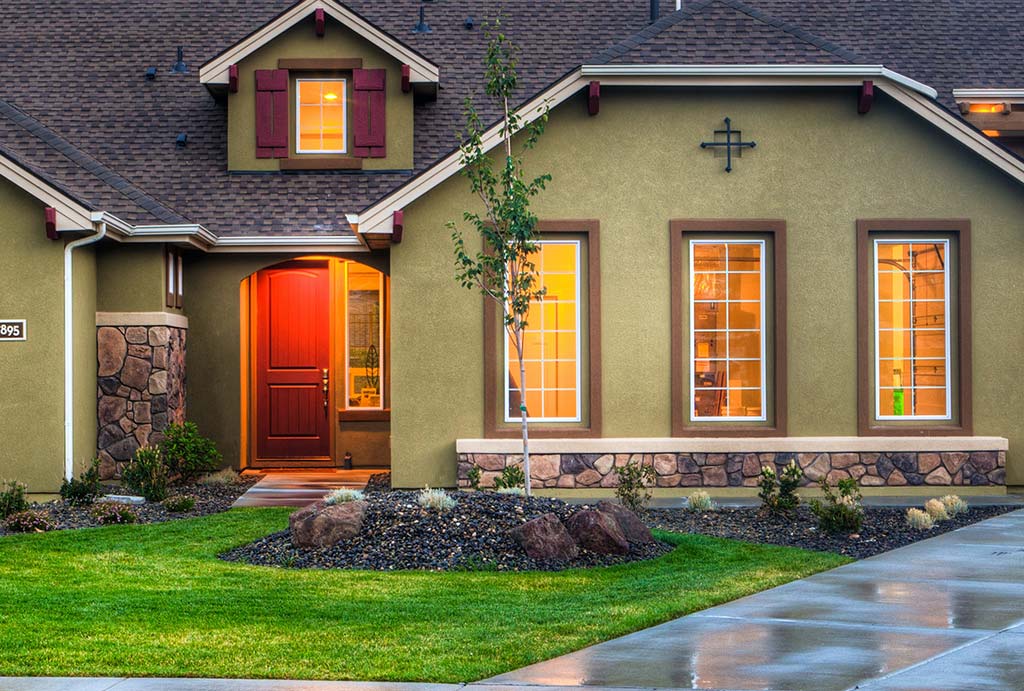Your New Roof Color
When it’s time for roof replacement at your Indianapolis home, or to decide on the specifics of a roof for a new house, roofing companies ask you to decide on a variety of options. One of these is the color. Whether you’re opting for roof singles, roof tiles, metal roofing, or some other roofing material, suppliers offer any number of choices.
With so many parameters to consider, color may seem like the least important. Your inclination may be to jump at the first one that looks good to you and let it go at that. But in fact, roof color warrants a little more thought. Specifically, you may want to think about the following.
Your New Roof Color: Points to Consider
How would this roof color complement (or clash with) the rest of the house?
Colors can blend, or they can create contrast. More traditional (which is to say, blending) choices for roof color include black, gray, and brown. Lighter tan and reddish-brown hues tend to provide contrast. A mix of colors gives a staggered effect. Whichever way you go, it’s helpful to understand that certain combinations just naturally tend to go well together.
- White, gray, blue, or yellow houses look good with gray or black roofs.
- Red or yellow brick houses go well with brown, gray, or black roofs.
- Stone and earth-tone vinyl siding look good paired with tan or brown.
Do you want a roof color that will make the house look bigger?
A lighter color will do the trick, particularly if it blends with the siding.
What roof color goes with the architectural style of the house?
You may not be an architect and feel yourself woefully unqualified to make judgments about architectural style. But by driving around Indianapolis and looking at homes like yours, you can see what looks good and what doesn’t. It’s not hard to observe, for example, that Spanish-style houses often have reddish clay-colored roofs (and look good with them), traditional colonials look good with a single color, and ranch houses can look good with a combination of colors.
Do you want a roof color that makes a statement or something more low key?
The bolder and more distinctive your choice, the likelier it is that your house will catch the eye of every passerby. You have to decide if that’s what you want.
How will this roof color affect your cooling and heating costs?
As you probably remember from science class, lighter colors reflect heat. Thus a light roof color can help keep your air-conditioning bill down. Conversely, darker colors hold heat, and therefore a dark roof color can help with your heating costs.
What roof color (or colors) do the neighbors have?
You probably aren’t under any obligation to match your neighbors’ choices exactly. But it’s worth noting that a roof color radically different than any of theirs can make your home look peculiar and as if it doesn’t belong in the neighborhood.
Depending on where you live, your homeowners association may even have rules that place limits on your choice of roof color. It’s worth checking before you proceed with a choice you don’t see reflected in any of the houses around you.
Is the roof color you like actually available in roof shingles, metal roofing, roof tiles, or whatever type of roofing material you’ve chosen?
As noted above, in today’s market, it very likely is. But if it isn’t, you’ll have to go with a different option.
Roof Color and Roofing Contractors
Finally, when it’s time to choose a roof color, know that you don’t have to go it alone. The professionals from roofing companies are happy to share their expertise and explain, for example, how you can use roof color (or colors) to accent elements like dormers and other distinctive architectural features.


